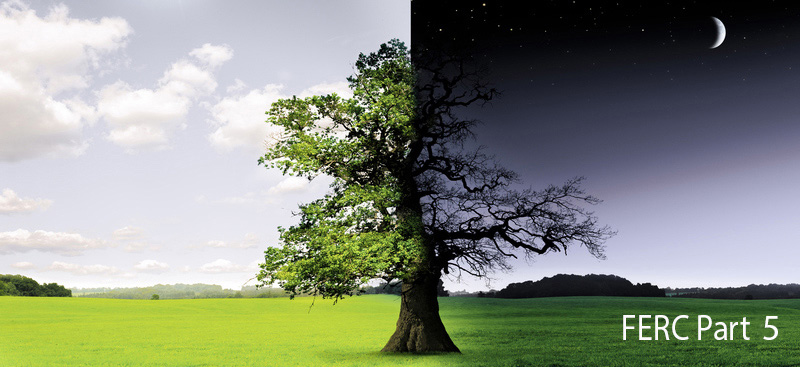FERC Resource Report 9 Noise Section
This is Part 5 of The FERC 55 dB(A) Ldn Requirement series, where we learn the practical ins and outs of this requirement.

In Part 1 of this series, I defined the Ldn metric in words, mathematically, and by example. In Part 2, I detailed how a continuous sound level of 48.6 dB(A) is equivalent to 55 dB(A) Ldn. In Part 3, we focused on the key phrase “the noise attributable to” to make clear that the noise generated by the compressor station or LNG facility is what is regulated (i.e., not combined with the ambient sound). I highlighted the fact that facilities can be located in relatively quiet or loud environments and this is part of FERC’s consideration. In Part 4, we looked at where the regulation applies and described what an NSA is. With the prerequisites under our belts, we can address the needs of completing a FERC Resource Report 9 (“RR9”) Noise Section. The required elements to be included are dictated by C.F.R. 380.12(k). The FERC-published Guidance Manual for Environmental Report Preparation prescribes the implementation.
The RR9 requirements (henceforth to mean only the noise section) can be boiled down to two simple questions:
1. How loud is it there now (before the facility or modification)?
2. How loud do you expect it to be (during construction and operation of the facility)?
To address question number one, it depends on whether your project involves a new or existing compressor station. For existing compressor stations, the regulation requires the submission of the results of a sound level survey while the compressors are operated at full load. Previous results may be used, if possible, which is very advantageous as it can save both time and cost. However, previous results should only be used after careful consideration. There are many factors to consider, such as the age of the data, overall project scrutiny, changes at the station or the nearby NSAs, and the specifics of the previous survey, to name a few.
For new compressor station sites, the existing ambient sound environment may be measured or “estimated based on current land uses and activities.” I generally do not recommend estimating existing sound levels without any supporting noise survey results whatsoever, as this leaves the door open for additional scrutiny by FERC. The clarity of whether to measure or estimate existing sound levels is mired in the grey area between the regulation and the implementation of the regulation. However, there is one scenario for which estimating the existing ambient sound level might be quite appropriate: if the site is very remote and there are no pre-existing NSAs within one or two miles.
To answer question number two, there is truly only one proper way forward: the expected sound level impacts must be estimated based on a quantitative analysis using a sound methodology, both of which must be reported per the regulation. The RR9 must make explicitly clear what the sound levels at nearby NSAs are expected to be and how those sound levels were calculated, which is usually via 3-D computer noise modeling or spreadsheet analysis. The predicted sound levels should be placed within the context of the existing ambient sound levels, so adverse impacts based on large sound level differentials (before/after) can be addressed if deemed important.
If the goal is to submit a Resource Report 9 that will meet FERC’s expectations and maximize the likelihood of an acceptable filing, then it is most beneficial to have a deep understanding of those expectations. This is where experience with FERC projects is highly advantageous, if not essential. Sound level surveys, analyses, and RR9 drafts not only need to be completed according to accepted industry practices, but they need to hold up to scrutiny during the permitting process. Scrutiny is possible from FERC, interagency review, and public input.
Summary:
A FERC Resource Report 9 Noise Section should
- Describe the existing ambient sound environment.
- Predict the expected sound level impacts during construction and operation.
- Stand up to FERC, interagency, and public scrutiny.
 About the Author - Tim Simmons, Ph.D. - USSI Director of Industrial Acoustics
About the Author - Tim Simmons, Ph.D. - USSI Director of Industrial Acoustics
Dr. Tim Simmons manages USSI's Industrial Acoustics Department. Tim comes to USSI with a wealth of Acoustical and Noise Control knowledge and real-world experience. Tim holds a Ph.D. in Physics from the University of Mississippi and a B.S. in Engineering Physics from the University of Tennessee.
Member INCE, ASA, ASME
